Intergenerational Solutions for Intergenerational Problems
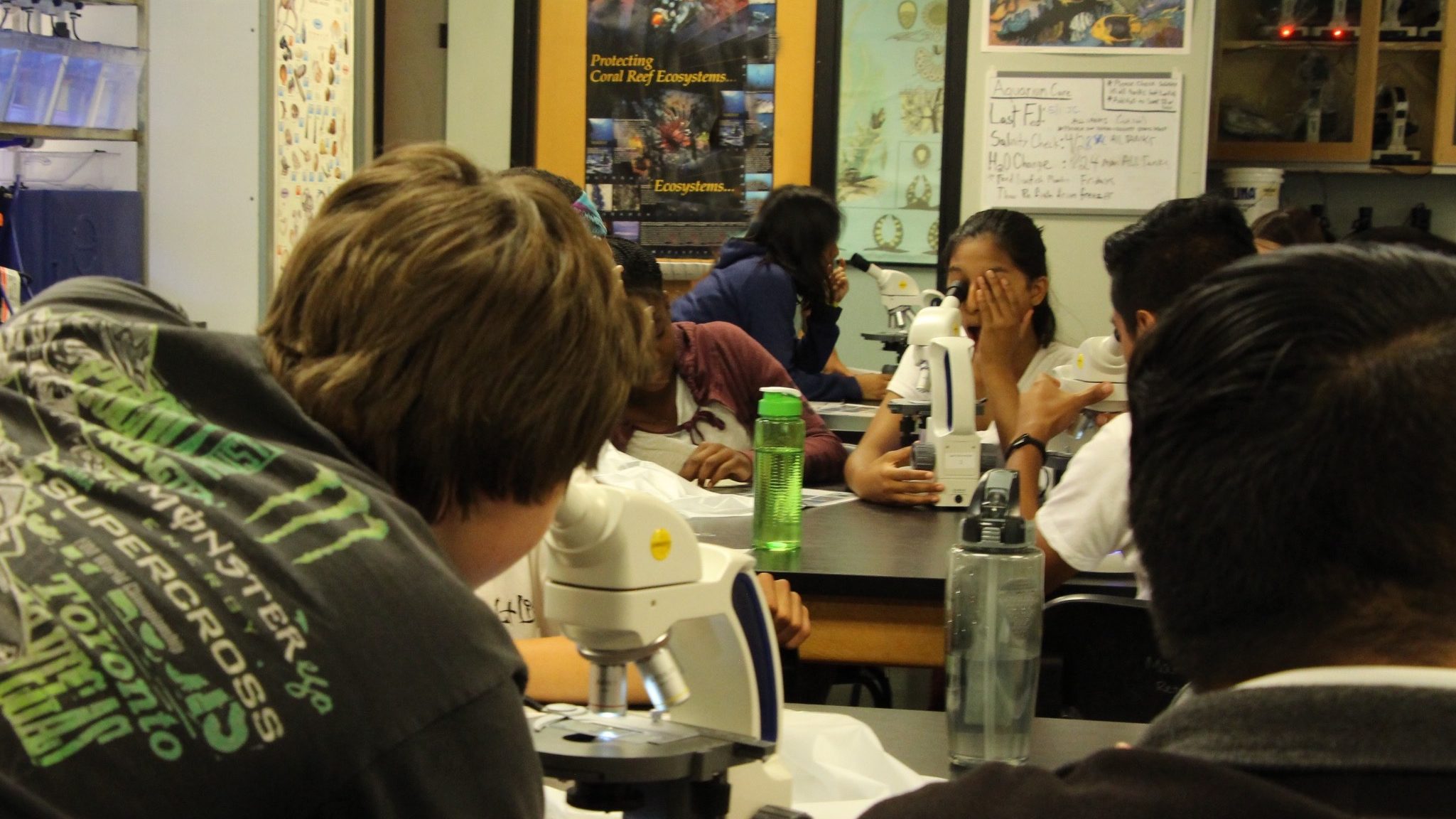
This NC Sea Grant article highlights the compelling research and community engagement by 2018-19 Global Change Fellow, Danielle Lawson, and her research team, which included SE CASC Faculty Affiliates, K.C. Busch, Nils Peterson, Erin Seekamp, and Kathryn Stevenson. The original article, written by Danielle Lawson, Jenna Hartley, and Dave Shaw, can be viewed here.

New research suggests students can bring science to adults.
By Danielle Lawson and Jenna Hartley
Danielle Lawson, a USDA-NIFA Postdoctoral Research Scholar in the Department of Parks, Recreation, and Tourism Management at NC State University, explores literacy and intergenerational learning, and previously served as an environmental educator. North Carolina Sea Grant supported her dissertation research, which evaluated whether middle-school children can impact their parents’ levels of concern about the climate. Her research has appeared in Nature Climate Change and other journals.
Jenna Hartley, a NOAA Dr. Nancy Foster Scholar, studies in the Ph.D. program in Parks, Recreation, and Tourism Management at NC State University. Her work includes marine debris research, which North Carolina Sea Grant has supported. Previously, she served as a high school science teacher for seven years and then as a fellow at the U.S. Environmental Protection Agency for three years.
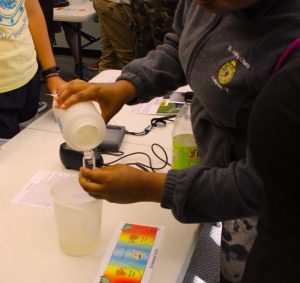
It’s probably no surprise to most people that children and youth think and experience things differently than adults. Kids are keen observers. They get excited by a new bug that they find outside, which adults might not notice. They also observe with clarity, unhindered by the mental shortcuts we develop as adults, the kinds of shortcuts that make bugs blend into the scenery during a walk.
North Carolina Sea Grant-funded research, from an interdisciplinary team at NC State and Duke, suggests that because of these differences, children may be able to help solve environmental problems by communicating with the adults in their daily lives and communities.
How Adult and Child Perceptions Differ
As adults, we form our perceptions of the world based on a number of things — our personal experiences, what trusted peers and leaders think, political ideologies, and our cultural identities and worldviews. These biases act as mental shortcuts in order to help us make sense of a complex world.
Research shows that biases shape perceptions about a host of issues. How adults perceive and act on environmental topics, for instance, often has more to do with their political identities than how much they understand the science. This helps explain why adults can look at the same scientific reports about climate change and come to vastly different conclusions about the severity of the issue, as well as what to do about it.
However, research tells us that students are different. They are only just developing their own set of experiences and cultural worldviews, so they do not rely on biases as heavily. As a result, when forming their perceptions about complex environmental issues, such as climate change, they seem to reach similar conclusions as scientists.
This difference between adults and children guides our research: We wanted to know if children’s environmental perceptions influence the environmental perceptions of the adults in their day-to-day lives. If so, could children help bring people together to work for solutions?
We think they can — through intergenerational learning, the transfer of knowledge, attitudes, or behaviors when people from two different generations interact. After all, research has documented that children impact their parents in a variety of ways, from deciding the restaurant they go to for dinner to starting to recycle at home. But could intergenerational learning help adults understand environmental science?
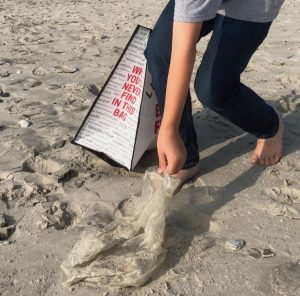
Students as Environmental Communicators
We are a part of an interdisciplinary team of researchers from NC State and the Duke University Marine Lab that investigates the potential of children and youth to communicate with adults. North Carolina Sea Grant has funded two core projects on intergenerational learning since 2016, and the findings suggest its effectiveness in improving adult literacy on environmental topics.
Climate Change
In our first study, we looked at how children can impact their parents’ levels of concern about climate change. We trained middle school science teachers in a curriculum about climate change and wildlife, which they taught their students over the course of a school year. Students learned about the differences in weather and climate, how climate impacts North Carolina wildlife, how management can help wildlife adapt, and how humans impact the climate. After the classroom activities, students participated in service-learning projects on the coast to investigate how they can help with coastal climate hazards.
Using data we collected from 238 families at the beginning and end of the school year, we found that after participating in the curriculum, not only did students’ levels of concern about climate change increase, but so did their parents’ levels. What we didn’t expect to find is that intergenerational learning worked differently with different types of parents.
Research tells us that typically two groups — men and self-identified conservatives — are the least concerned about climate change. In our study, however, we found that child-led communication about climate change is most effective for these same two groups, or when the conversation comes from daughters. This likely reflects the special relationships between parents and their children — the levels of trust and immediacy that might make a child more persuasive than another adult to a parent on the topic of climate change.
Nils Peterson, a member of our research team from NC State’s Fisheries, Wildlife, & Conservation Biology program, says this study shows children can help adults understand important findings about the environment: “They help us overcome psychological barriers to using scientific facts when forming our perceptions about climate change.”
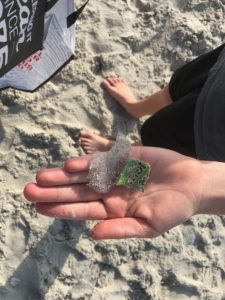
Marine Debris
Our second intergenerational learning project focuses on marine debris — plastic in the ocean — and adds an extra component of locally based student civic engagement. Much like our first project, we are evaluating whether or not kids can shape adult perceptions, attitudes, and behaviors.
This project has been successful in large part due to the collaborative partnership with the Community Science team at the Duke University Marine Lab in Beaufort, North Carolina, which Liz DeMattia heads. The Community Science team developed, piloted, and published a free marine debris curriculum for 4th and 5th grade teachers. Our NC State Environmental Education Lab team then worked with DUML to train approximately 50 teachers from 33 North Carolina counties on the curriculum.
In addition to conducting indoor and outdoor activities and speaking with their families, students in the marine debris project engaged with other adults and local officials in the community through civic engagement events. Because the students had complete decision-making authority on how to engage their communities, the events varied, ranging from plays and speaking at Town Halls to videos and a “Trash Fashion Show.”
One of the teachers even remarked on how excited the students were and described her role after teaching the content as simply “trying to get out of the kids’ way” once students took the lead.
The initiative has generated statewide enthusiasm with students, teachers and families from the mountains to the sea engaging in solutions for their communities. Student-led civic engagement on environmental topics, on this scale across North Carolina, is inspiring.
Preliminary analyses suggest that students are having big, positive impacts, particularly on adults in their communities. We expect final results within the next year. Meanwhile, a new group of teachers are using the curriculum in their classrooms during the 2019-2020 school year.
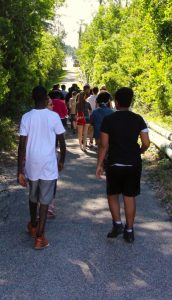
Children and Youth as Catalysts for Environmental Change
As the emerging results from these studies suggest, perhaps children are some of the most effective environmental communicators.
There is no doubt that environmental challenges are complex and urgent. We often feel a responsibility for teaching children about environmental issues; it is the “right thing to do,” because they will experience the brunt of the impacts. If we start empowering children to be the educators and leaders as well, though, they also might bring more adults together now to work for research-based policies and solutions. Already, civic-minded students in North Carolina are bringing science into conversations about real-life situations.
Access the NCSU Weather, Wildlife, Climate, Change, & Reflection curriculum.
Access the DUML Marine Debris curriculum.
The researchers involved in this work include: Kathryn Stevenson, NC State’s Department of Parks, Recreation, & Tourism Management and head of the NCSU Environmental Education Lab; Nils Peterson, NC State’s Fisheries, Wildlife, & Conservation Biology program; Sarah Carrier, NC State’s Elementary Science Education program; Renee Strnad, Environmental Educator for NC State’s Extension Forestry; Erin Seekamp, NC State’s Department of Parks, Recreation, & Tourism Management; K.C. Busch, NC State’s STEM Education program; and Liz DeMattia, lead research scientist of Duke University Marine Lab’s Community Science Initiative.
This work would not have been possible without more than 85 teachers, 700 parents, 3,500 students, and multiple community partners who participated and contributed.
- Categories:
